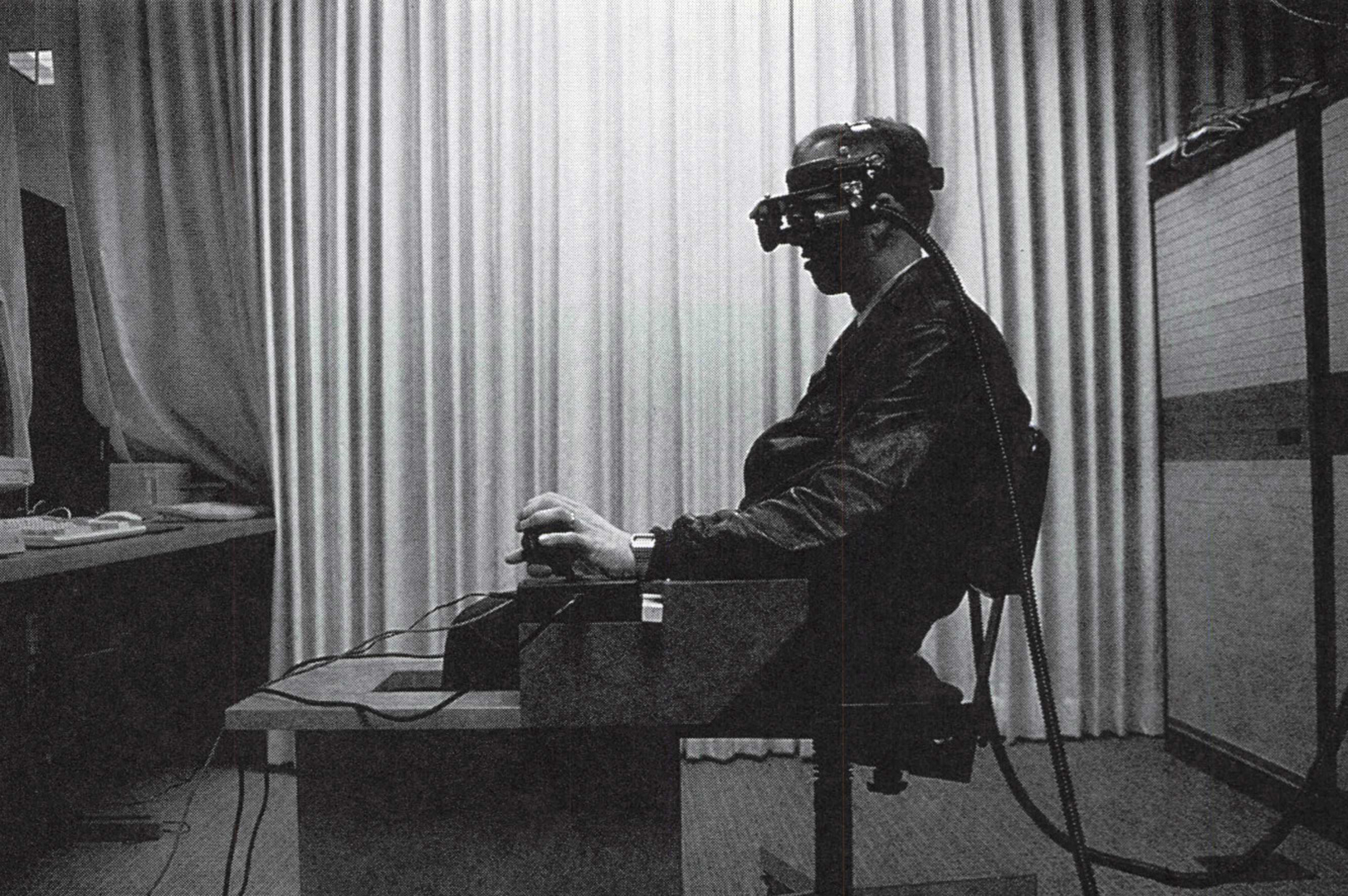“Virtual Environments for Public Exhibitions or ‘Look Ma, I’m Flying’” by Bolas
Conference:
Experience Type(s):
Entry Number: 50
Title:
- Virtual Environments for Public Exhibitions or ‘Look Ma, I’m Flying’
Program Title:
- Tomorrow's Realities
Organizer(s)/Presenter(s):
Collaborator(s):
Description:
Visitors to the Virtual Reality Laboratory will get a front-stage and backstage look at virtual reality (VR) by both experiencing and manipulating a VR world. Visitors learn, through hands-on manipulation, that everything in a VR world: lighting, colors, objects, atmospheric effects,
gravity, collisions, etc. is completely synthetic and can easily be altered. This presentation was designed by Art Technology Group and Fakespace, Inc., and is based on the Virtual Reality Laboratory Exhibit developed by Art Technology Group, the feature of the new exhibit “Imaging, The Tools of Science” at the Chicago Museum of Science and Industry. The VR Laboratory is unique in providing both a highly detailed immersive experience as well as the ability to manipulate the virtual environment itself. The exhibit places a short narrative experience within a laboratory setting where visitors can experiment with the various elements that comprise a virtual reality environment that someone else is in.
The VR Laboratory consists of three stations: an immersion station and two manipulation stations for external participation. The immersion station is a Fakespace BOOM that puts the visitor into the virtual world, while the other two stations are console-type computers that allow visitors to manipulate the world in different ways. The view of the world that is rendered on the immersion station is repeated on a large projection screen above the station and twice again on screens at the manipulation stations. These repetitions allow all of the visitors in the space to observe the virtual environment and how its participants are interacting with it. The external controls provide access to virtual world parameters such as lighting sources, atmospheric effects, physical model parameters, actions, scripts, animations, etc. Visitors learn that everything we take for granted in the real world must be carefully thought out and modeled in a virtual one. The effects of wrongly modeling these factors can create very entertaining situations, such as reversals of gravity or objects passing through each other instead of bouncing.
The content of the VR experience is designed as a symbolic illustration of the acquire, process, and display stages of the image processing “loop” that is then reinforced elsewhere in the exhibit. The journey begins in a model of a room and follows the travels of a face as it is acquired into a video camera, processed in a “circuit city,” and finally displayed back into the real space. The sequence shows a number of very different looks and feels to convey the diversity that a virtual environment can provide. Visitors go beyond merely experiencing a VR demo. Rather, they interact with the underlying concepts and technology of VR. The VR Laboratory will be greatly entertaining for the participants as well as for those who want to look over the shoulders of others at the manipulation stations.
The project was partially funded by the National Science Foundation, Chicago Community Trust, Howard Hughes Medical Institute, and the Radiological Society of North America. Modeling software was donated by Software Systems and Softimage. 3D Datasets were donated by Viewpoint.
Hardware
■ SGI Reality Engine
■ BOOM2C or RGBOOM viewer
■ Video Projector
Software
■ Fakespace VLIB-SGI
■ Art Technology Group
■ Custom Software
■ Illustration courtesy of Art Technology Group and Fakespace, Inc.: montage photo of BOOM and screen example





